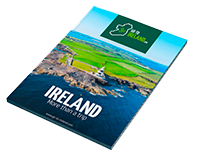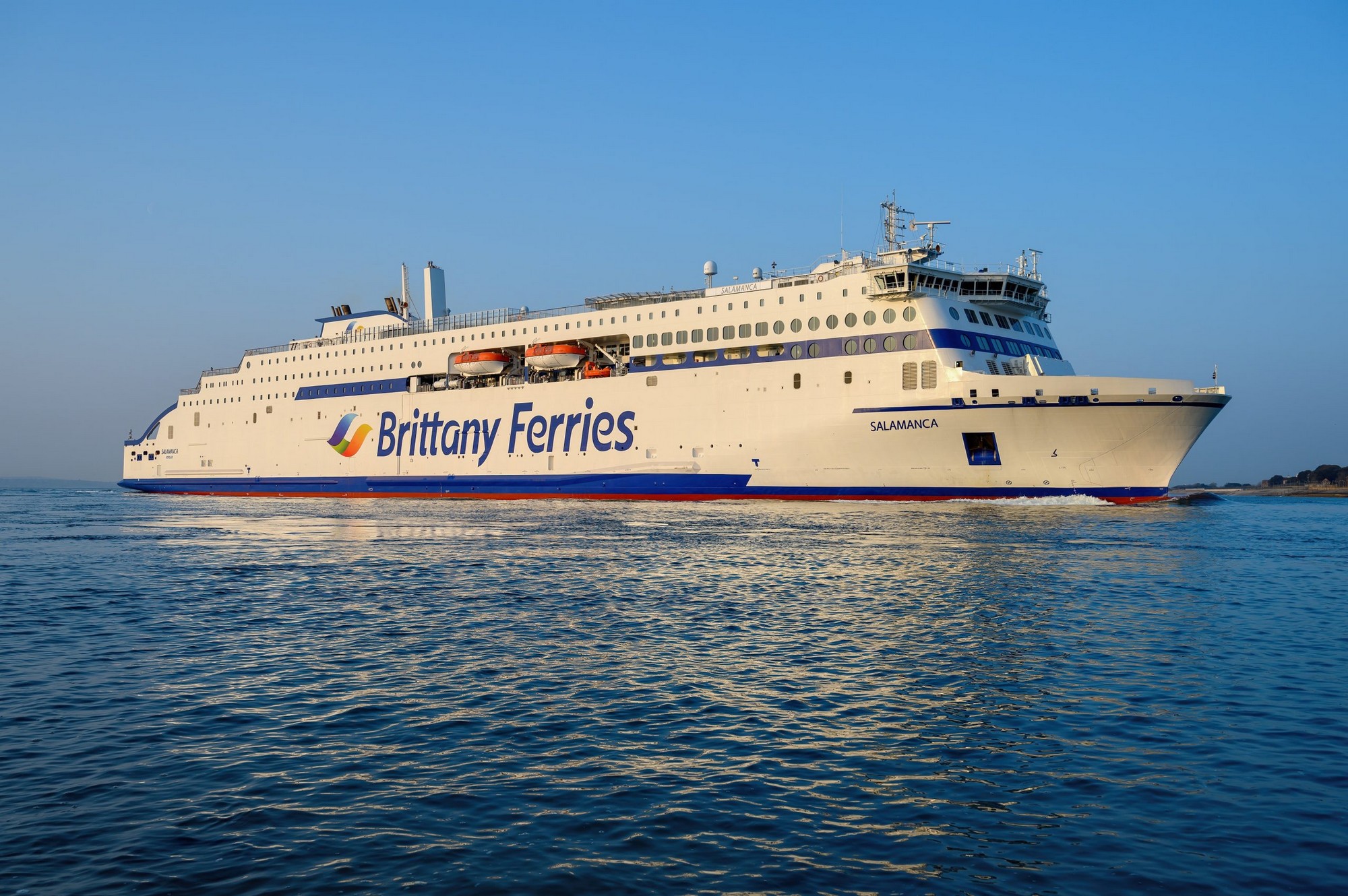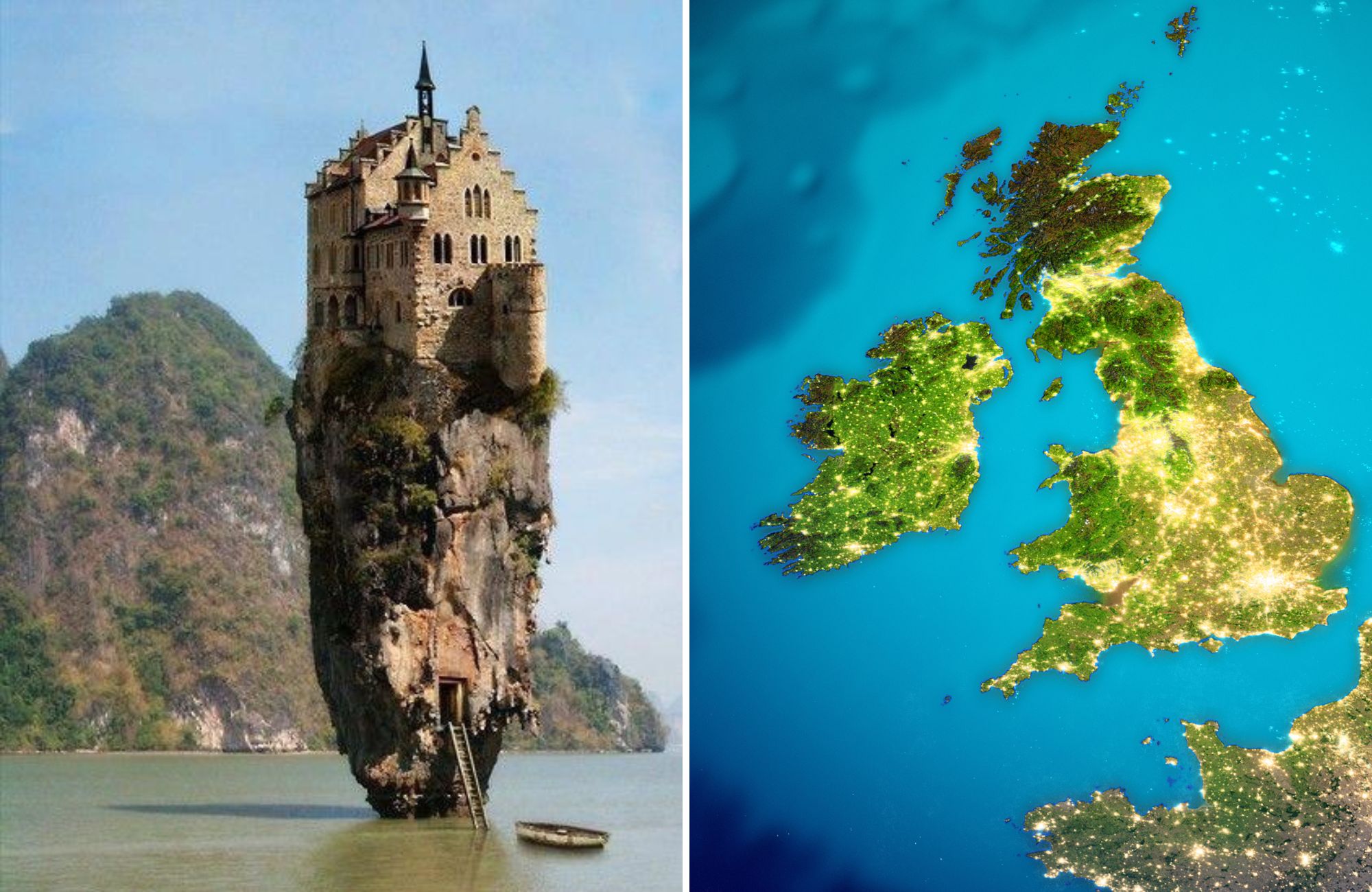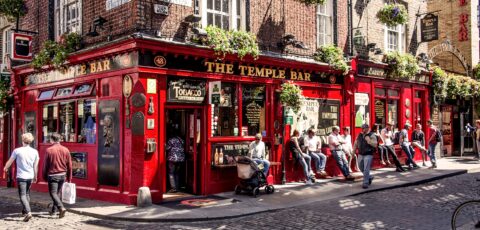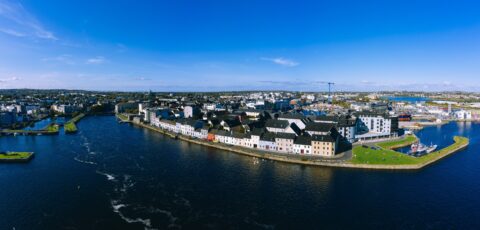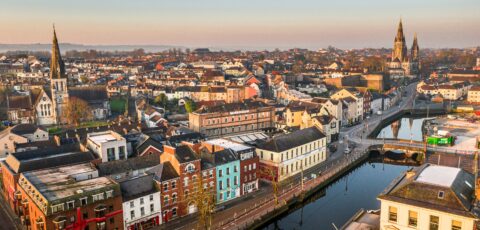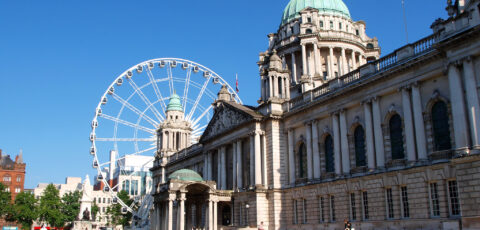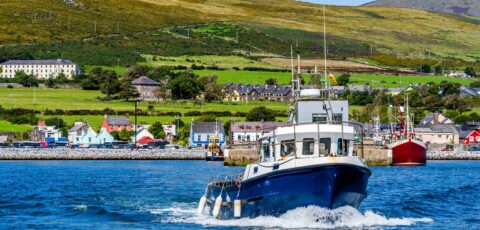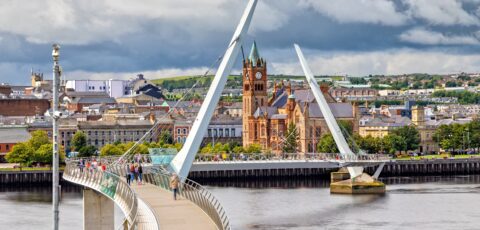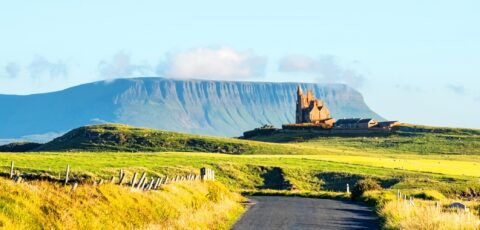Irish Gaelic
An ancestral language that has forged the identity of Ireland, past and present! Still spoken in some parts of the island, it is a symbol of Irish cultural tradition!
Contrary to popular belief, English is not Ireland’s first official language. For centuries, the Irish have spoken an ancestral language known as Gaelic (also called Irish Gaelic or “Irish”), a Celtic language still used in Ireland today.
Introducing Irish Gaelic
An ancestral language still spoken

A sign in Irish Gaelic – © nordmann
Irish Gaelic is an Indo-European Celtic language spoken exclusively in Ireland.
It is the first official language of the Republic of Ireland (predominating over English), and has also been declared a regional language in Northern Ireland.
In 2005, the language also gained the status of official working language of the European Union, making Irish Gaelic one of Ireland’s leading languages.
Today, over 70,000 Irish people are said to speak Gaelic in their daily lives within the Gaeltacht, a group of regions in Ireland where the population rejects English in favor of Irish Gaelic.
It is estimated, however, that 1.8 million Irish people have some approximate knowledge of the language, taught in their youth at school (Irish is a compulsory subject in all schools in the Republic of Ireland).
History of Irish Gaelic
Birth of Old Irish and British repression of the language

The Book of Kells – Gerhard Huber – cc
Old Irish was born around 350 B.C. and took off in the 5th century, with the Christianization of Ireland by Saint Patrick. It was in the monasteries that the language was taught and developed, and was even given an official grammar. This “theorization” of Old Irish made it possible to disseminate the language more widely, but also to simplify it and make it more accessible. From one evolution to the next came what is now known as “Modern Irish”, a language derived from Old Irish, and which appeared around 1200.
Modern Irish has been practiced for many centuries by the Irish without any notable cultural conflict. But the situation is complicated by England’s plans to colonize Ireland, and its desire to wipe out Ireland’s cultural heritage.
The fault lay with Henry VIII, then King of England, who, after colonizing Ireland, drove the entire Irish population off its farmland, suppressed all rights to disseminate Gaelic culture, and formally proscribed the use of the Irish language, summoning the population to adopt English, the language of their colonizers.
Despite protests, the Irish eventually learned English, but were determined to keep Irish Gaelic as their first language, and practiced it discreetly despite the British ban.
Unfortunately, the Great Famine of 1845 further depopulated the regions where Gaelic was most widely spoken. The loss of human life, estimated at over 1 million, and the flight of Irish to the United States considerably reduced the number of Gaelic speakers in Ireland.
Ways to combat the extinction of the Irish language
More than just a Celtic language, Irish Gaelic is in itself a symbol of the Irish entity. A symbol that had to be safeguarded at all costs from the dangers of Anglicization and English imperialism.
That’s why, in the 20th century, the Irish government – then under British trusteeship – began to develop a policy of support to preserve and rehabilitate Gaelic. This particular attachment to the language led in 1937 to the declaration of Gaelic as the first official language (Constitution of 1937), and the introduction of a compulsory Gaelic teaching program in schools.
Since then, Irish has become the Republic of Ireland’s first official language. In Northern Ireland, however, its status is limited to that of a regional language.
Despite this recognition of Gaelic, the Irish language is still under threat, as Irish people gradually lose interest in the language. Faced with this reality, the State is also insisting on facilitating access to the Gaelic language for the Irish.
In this way, we can observe efforts in the following areas:
- the media :
- Television channel broadcasting in Gaelic: TG4 (Teilifís na Gaeilge 4)
- Other national stations, RTÉ 1 and RTÉ 2 (Raidió Teilifís Éireann), also broadcast in Irish. TV3 doesn’t offer any, so far.
- Radio stations: RTÉ Raidió na Gaeltachta, Raidió na Life, Raidió Fáilte (in Belfast)
- Toponymy :
- Road signs are in English and Gaelic to maintain bilingualism



